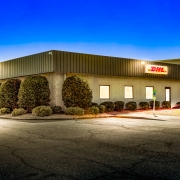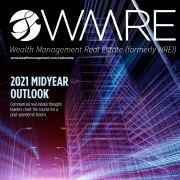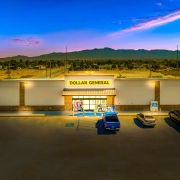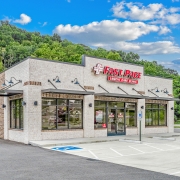Adapting C-Stores to Changing Consumer Preferences: A Smart Move for Investors
Convenience stores (c-stores) have long been appreciated for their accessibility and essential offerings. Yet today’s consumers expect more than just convenience—they’re looking for healthier options, digital conveniences, and environmentally responsible practices. This shift in consumer expectations opens new opportunities for investors who see the potential of evolving c-stores to attract a broader, more engaged customer base and remain relevant in a competitive market. Embracing these changes not only boosts profitability and property value but also positions investors at the forefront of an industry in transformation. Sands Investment Group (SIG) offers strategic guidance to help investors leverage these trends for growth and resilience.
Changing Consumer Expectations
The evolving c-store industry is responding to changing consumer values and lifestyles. Key transformations in the market include healthier food options, advanced technological integration, and sustainable initiatives that resonate with today’s customers.
Hot and Healthy Food Options
Today’s health-conscious shoppers want more than traditional convenience fare. Many c-stores now offer hot, freshly prepared meals that cater to diverse tastes, including items like grilled chicken sandwiches and customizable salads. These nutritious and appealing options position c-stores as convenient dining destinations, increasing per-visit spending. By transforming their food offerings, c-stores turn quick stops into opportunities for customers to spend more while enjoying a higher-quality experience.
Technology Enhancing Experience
Technology is revolutionizing the shopping journey in c-stores. Self-checkout kiosks, mobile ordering platforms, and contactless payment systems are no longer optional—they are essential. These features streamline operations and create frictionless experiences that encourage customers to explore additional products. Andrew Ackerman, Executive Managing Partner at SIG, explains: “The industry has consistently evolved—from full-service stations to self-service, from cash-only to digital payments, and now to cashierless convenience. Innovation drives profitability.” For investors, adopting such technology boosts customer satisfaction while enhancing operational efficiency, reducing costs, and increasing transaction volumes.
Sustainability and EV Infrastructure
Sustainability is a growing priority for consumers, and c-stores are adapting by integrating environmentally friendly features such as electric vehicle (EV) charging stations. These stations attract eco-conscious customers, open doors to new revenue streams, and position properties as future-ready. Investors who prioritize such sustainable practices can align their assets with both consumer values and emerging regulatory trends, ensuring competitive positioning in the marketplace.
The Investor Advantage: Driving Profitability and Stability
Investors in modernized c-stores stand to gain substantial benefits and by aligning with consumer preferences, these stores can significantly increase their profitability. Enhanced food offerings, for instance, not only attract a broader range of customers but also drive higher spending per visit. A customer stopping for fuel might now spend an additional $15 on freshly prepared meals, beverages, or other essentials—a marked improvement over traditional transaction volumes.
Profitability also plays a critical role in the overall stability of a c-store investment. Successful stores with robust revenue streams bolster the creditworthiness of their operators, paving the way for stronger lease agreements. John Brown, Investment Sales Advisor at SIG, highlights this shift: “C-Stores are now expanding… with larger stores, sometimes over 4,500 square feet, and full kitchens. The trend is moving toward high-margin food service, clean landscaping, and an overall consumer-friendly experience.” Properties that fail to adapt risk losing value and missing out on future growth.
Conclusion
The evolving c-store landscape offers unique opportunities for investors willing to adapt. By embracing consumer-driven trends such as health-focused offerings, advanced technology, and sustainability, c-stores can stand out in a competitive retail space, attract a loyal customer base, and increase property value. For investors, these adaptations not only drive higher profitability but also build resilience against market shifts.
At Sands Investment Group, we are dedicated to helping investors navigate these changes with precision and insight. Our experienced advisors offer in-depth market analysis to pinpoint the best opportunities and provide tailored strategies to align c-store investments with emerging trends. By guiding investors through strategic improvements—whether in technology or sustainable practices—we ensure that c-store properties remain relevant, profitable, and positioned for future growth. With SIG’s support, your investments in the c-store sector can capture today’s consumer demands and drive long-term success.
Contact our C-Store Team today to learn more about our services and how we can help you achieve your financial goals.






























